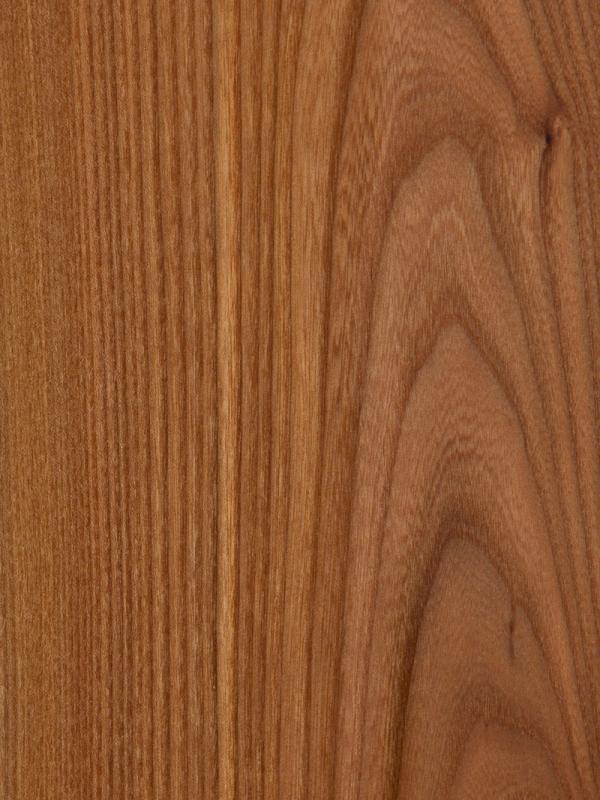
Family: Ulmaceae.
Latin Name: Ulmus rubra.
Origin: Native range includes southeastern North Dakota, east to Maine and southern Quebec, and then south to the northern part of Florida and continues west to the eastern part of Texas.
Common Names: Red Elm, Slippery Elm, Soft Elm, Moose Elm, Indian Elm.
The Tree (characteristics): Red Elm trees can grow to heights ranging from 50 to 80 feet tall with a trunk that ranges 2 to 3 feet in diameter. The leaves have distinct serrated margins. They are obovate in shape with a rough upper side and smooth velvety underside. The bark is grayish-brown with deep diamond-shaped fissures and broad ridges.
Appearance of Wood: The heartwood of Red Elm is light to medium brown with a hint of red on occasion. Sapwood is well defined and is a pale white or cream color. Red Elm has a straight grain and can be interlocked.
Density: Red Elm is considered wood with a medium density. Average reported specific gravity ranges from .48 to .60 with an average dried weight of 38 pounds per cubic foot. Janka Hardness is 860 pounds of force.
Drying and Shrinkage: Red Elm has a moderately high to high shrinkage. Average shrinkage values are 4.9% radial, 8.9% tangential, 13.8% volumetric. Red Elm dries well with little degradation.
Working Properties: Red Elm is easy to work with. It will nail, screw, and glue well. It can be sanded and stained to a good finish. Red Elm responds well to steam bending and holds nails and screws well.
Durability: Living Red Elm trees are susceptible to Dutch Elm disease. The wood itself is rated as non-durable and tends to be susceptible to insect attacks.
Uses: Red Elm wood is used for boxes, baskets, furniture, hockey sticks, veneer, wood pulp, and paper-making.
Availability: Red Elm is readily available, although availability from mature trees has diminished due to Dutch Elm disease.